Forcing crocuses by March 8 - tips, secrets and rules
The flower market for Women's Day on March 8 is replete with bouquets, but such a gift does not last long. Better to please your beloved woman with early flowering crocuses in a pot... There is snow outside the window, and delicate buds have blossomed on the window. What could be more romantic! You will not have to think about a gift for March 8 if you learn how to distill early flowering graceful crocuses. The process requires certain knowledge, patience, but the woman's joy from the gift will pay for her diligence.
Growing a flower by a certain date is always difficult. To do this, you need to calculate exactly the landing time. And without special preparation of the bulbs, it is difficult to present graceful blossoming buds in a beautiful flowerpot. I would like the blooming of crocuses, or saffron, to last longer. Therefore, they follow the rules for caring for an ornamental plant, place it in appropriate conditions.
Content:
- The best varieties of crocuses for forcing
- Pot selection
- Preparing the soil substrate
- Preparing the bulbs
- Landing dates and rules
- Lighting, humidity, temperature
- Watering and feeding crocuses
The best varieties of crocuses for forcing
Crocuses are chosen as a gift for a woman because they are the personification of purity and virginity. Growing on mountain slopes in natural nature, flowers delight with corollas of a pale blue tone with a yellow center. The buds appear from under the snow in March-April.
Breeders have bred varieties and hybrids of different colors, among which it is suitable for forcing at home.
| Variety |
Flower features |
| Joan of Arc |
A prolific variety with large flowers, snow-white or purple, stem height up to 15 centimeters. |
| Pickwick |
A variety that forms glasses of petals in both white and lilac tones, or two-colored, with narrow dark green leaves decorated with white veins. |
| Striped Beauty |
Variety with blue-lilac petals in white stripes, stem height from 10 to 15 centimeters. |
| Yellow Mammos (Yellow Mammoth) | Hybrid variety with golden yellow cupped rims up to 4 centimeters in diameter. |
| Purpureus Grandiflorus |
A beautiful variety with a stunning aroma of regular shaped blue flowers. |
All varieties and hybrids can be prepared by March 8 by choosing large-flowered crocus corms in a specialized store. It is advisable to purchase planting material in the fall, when it is of the highest quality.
Pot selection
The container in which the crocus bulbs will be placed must be specially selected. Any pot is not suitable for forcing flowers, because up to 5 - 10 bulbs will sprout in it. And here it is important that they do not come into contact with each other.
The color of the container is selected according to the decor of the premises and the spring mood.
It is impossible for the corms to be located next to the walls of the container. There should be a gap of 3-5 centimeters between them. Therefore, you need to prepare a pot wide, 10-15 centimeters in diameter, with low walls. A bowl or a special rounded vessel with holes or pockets for flower sprouts is best suited.
Holes are drilled at the bottom of the container through which excess moisture will drain.The material for the container will be plastic or ceramics. In earthenware containers, the walls breathe better, and moisture does not accumulate.
Preparing the soil substrate
For crocuses, the soil is selected neutral acidity... A feature of the substrate should be looseness, good moisture and air permeability.
The nutritional value of the soil does not play a big role in flower forcing. It is enough to add one part of the soil composed of sand and peat to the prepared and disinfected garden and turf soil. If planted in sand, then add humus and peat without fail.
But in the container, a drainage layer is necessarily poured onto the bottom, which is necessary for the excess liquid to drain out after watering.
It is believed that for forcing crocuses, the composition of the substrate is unimportant. Saffron blooms successfully both in sand, expanded clay, even in water. But with the subsequent use of an ornamental plant as a home inhabitant, it is better to immediately accustom it to a nutritious substrate. A multilayer soil mixture is also used. The roots of the flower growing from the bottom of the bulb will be in a nutritious soil, and the body will be protected from decay by sand.
Preparing the bulbs
When forcing crocuses, corms undergo at an accelerated rate the processes that they need for flowering in natural conditions. An ornamental plant is given only three months for cooling and rooting. If flowers from the garden are used, then the bulbs are dug up in June. In this case, the rejection of damaged and small ones occurs.
The material must be dried and placed in a room with a high air temperature. For 7 days, the bulbs are warmed up in the sun at 34 degrees, then they can be removed to a place where the temperature is moderate, not higher than 20 degrees Celsius. After 15 days, the temperature can still be lowered to 17-15 degrees. In August, after the 10th, it was time to cool the planting material.
For a month, it is better to put crocus corms in the refrigerator, previously wrapped in thick paper.
You can keep crocuses for longer. To carry out forcing by March 8, the plants should be planted in the ground in October or early November. The signal for the growing season of flowers is their planting in a container with a soil substrate.
Landing dates and rules
It is possible to calculate the time for distillation of early flowering crops, taking into account the fact that it takes 3 months for cooling and rooting. For saffron to bloom for the spring holiday, it is necessary to plant from October 20 to November 5.
Landing features:
- Expanded clay or pebbles are poured into the prepared pot, then a layer of nutrient substrate.
- The corms are laid out so that they do not come into contact with each other and the walls of the container.
- It remains to press the bottom a little and sprinkle it on top with sand, slightly compacted. You can sprinkle with expanded clay on top.
- After abundant watering, the pots are moved to a cool room with a temperature of 5-9 degrees Celsius. Here they will have to spend almost 2 months to take root.
- You can keep the onion pots in your basement or garage, even in the fridge on the bottom shelf.
Only after cooling is distillation started. The procedure is carried out 2 weeks before crocus bloom. The plants will take root at this time, which will be visible in the drainage holes of the container. Sprouts 5 centimeters long will also appear.
These signs show that the flower is ready for distillation. Now it can be transferred to a bright room, where the air temperature is within 15 degrees above zero. At night, it is better to expose the pot with sprouts to a cold of 0 degrees. The plant is given the appearance of the coming of spring, and it begins to throw out the buds.
Lighting, humidity, temperature
After the ejection of the peduncles, crocuses can quickly wither, so you need to create conditions for them for long-term flowering:
- During the day, flowers need light, but moderate, and dim, which usually happens at the beginning of spring. Therefore, it is necessary to place the pots of blooming crocuses on the windowsills of the northwest or northeast.They will wither even from strong artificial lighting.
- The flower needs moisture slightly more than the norm, so you can put a saucer with water, or better, snow next to it.
- It is imperative to monitor the temperature when crocuses are blooming. Even a slight increase in it will lead to the fact that the buds will fall off. Enough 14-15 degrees in the daytime, and at night from zero to minus 1-2, to prolong the flowering of delicate plants.
Crocus conditions should be close to natural conditions. And the appearance of blue buds from under the snow begins when the air only warms up slightly.
Watering and feeding crocuses
After throwing out the buds with spring flowers, they are watered moderately through a pallet. Usually, under good conditions, you can admire blooming crocuses for up to three weeks. As soon as flowering stops and the leaves of the plant turn yellow, watering is stopped. They feed the decorative culture when they want to transplant it into the garden or leave it as a home.
You can leave for re-distillation those corms that are preserved, not damaged or rotted.
After flowering, you can lightly feed the soil with ammonium nitrate or its potassium analogue. Water in moderation, dampening the moss or pebbles in the pan. The water level should not affect the bottom of the corm. So it will be preserved and it can be transplanted into fresh soil mixture again.
Since September, they begin to prepare crocuses for a new distillation. Early flowering crocuses will bring a bit of spring into your home every year if distilled correctly.
More information can be found in the video:



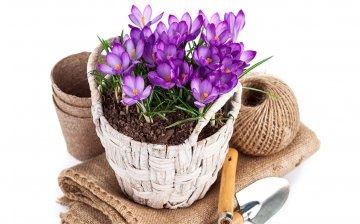
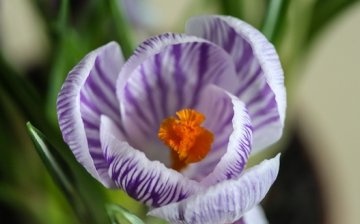
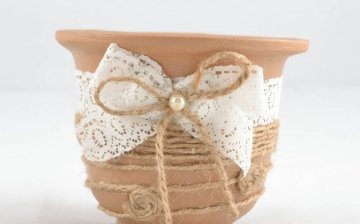
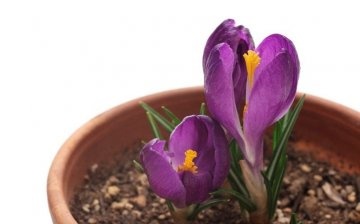
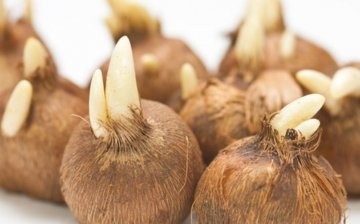
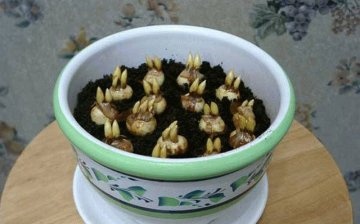
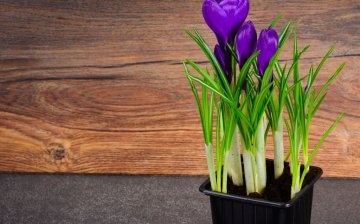
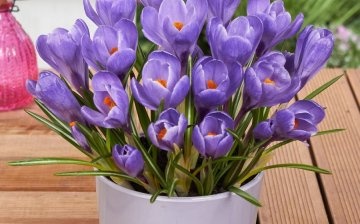










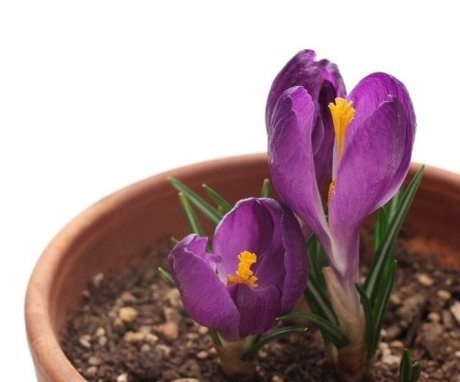
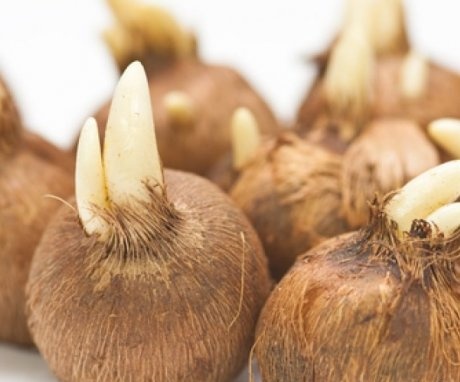
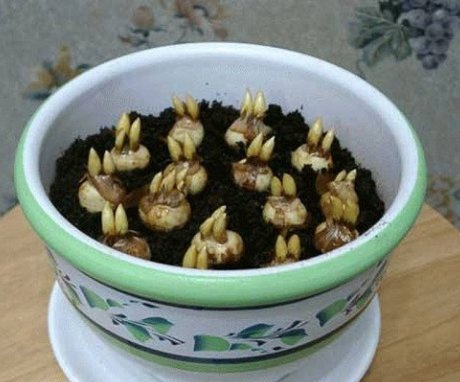


Usually I plant in early November, crocuses then just start to bloom by March. The main thing is to properly withstand the temperature regime and for the first 2 months not to allow the temperature to rise above 10 degrees Celsius.
I have received crocuses as a gift more than once in the spring, but I did not even think that I could try planting them myself and make such gifts for my loved ones. This year I will definitely plant, following the recommendations from the article.